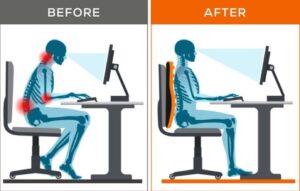In today’s fast-paced work environment, creating an optimal workspace for employees is crucial for productivity, satisfaction, and overall well-being. As employers, investing in the right workstation design can have a significant impact on employee performance and morale. In this comprehensive guide, we’ll explore the key factors to consider when choosing the right workstation design for your employees.
1. Understand Your Employees’ Needs : The first step in designing the perfect workstation is to understand the needs and preferences of your employees. Consider factors such as job roles, tasks performed, ergonomic requirements, and any specific preferences they may have.
2. Prioritize Ergonomics: Ergonomics should be a top priority when designing workstations. Ensure that desks, chairs, and other furniture are adjustable to accommodate employees of different heights and body types. Provide ergonomic accessories such as adjustable monitor arms, keyboard trays, and footrests to promote proper posture and reduce the risk of musculoskeletal disorders.
3. Promote Collaboration and Communication: Consider the layout and arrangement of workstations to promote collaboration and communication among employees. Open-plan workspaces can facilitate spontaneous interactions and idea sharing, while designated collaboration areas or meeting rooms provide space for more focused group work.
4. Provide Personalization Options: Allow employees to personalize their workstations to some extent, whether it’s adding photos, plants, or other personal items. Allowing employees to customize their space can help create a sense of ownership and pride in their work environment.
5. Stay Flexible and Adaptive: As the needs of your employees evolve, so too should your workstation design. Stay flexible and adaptive by regularly soliciting feedback from employees and making adjustments as needed. Consider implementing flexible seating arrangements or hot-desking policies to accommodate changing work patterns and preferences.
Investing in the right workstation design not only improves productivity and satisfaction but also demonstrates your commitment to employee well-being and success.




